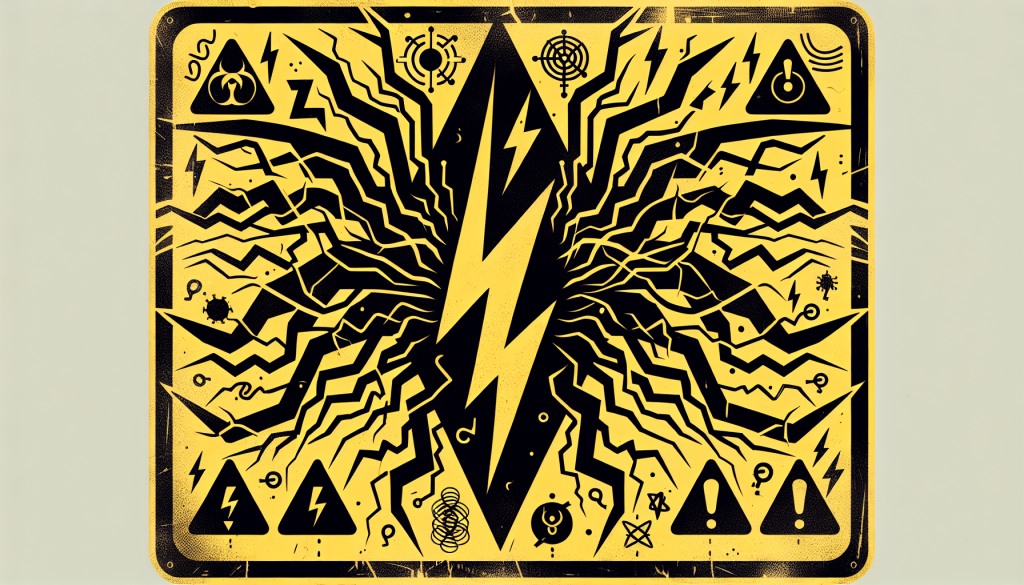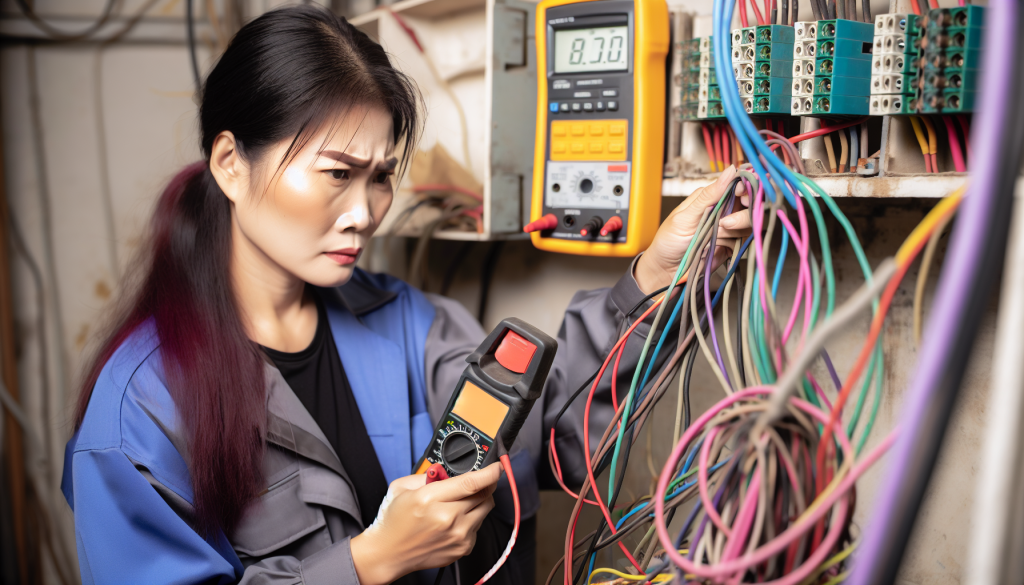How To Find What Is Tripping Your Circuit Breaker
- Key Takeaways
- Unravelling The Mystery Behind Your Tripped Circuit Breaker
- Decoding Your Breaker Panel: The First Step To Detection
- The Usual Suspects: Identifying Overloaded Circuits
- The Short Circuit Sleuth: Tracking Down Electrical Culprits
- Ground Fault Detective Work: Uncovering Hidden Hazards
- Appliance Audit: Isolating Faulty Devices
- Extension Cord Examination: Assessing Auxiliary Power Solutions
- Signs of Strain: Physical Indicators of Electrical Issues
- Expert Intervention: When to Call a Licensed Electrician
- Continuous Power Solutions: Protecting Your Electrical System
- Summary
- Frequently Asked Questions
Tired of your circuit breaker tripping? We provide the insights you need on “how to find what is tripping your circuit breaker”, minus the complicated terms. Discover precise steps to diagnose the issue, with straightforward advice to fix it. Prepare to flip the right switches with our expert guidance.
Key Takeaways
- Circuit breakers trip due to overloads, short circuits, and ground faults, and resolving the issue involves switching off all devices, and then resetting the breaker from ‘off’ to ‘on’ after a few seconds.
- Identifying a tripped breaker in the breaker panel involves looking for a switched-off breaker or a visual indicator such as a light or coloured tab, and to alleviate an overloaded circuit, redistribute plug-in devices to other circuits.
- Professional intervention is necessary when there are scorched outlets, electric shocks, and persistently tripping breakers. Continuous power solutions like generators can provide stable power and prevent tripping during fluctuations or outages.
Unravelling The Mystery Behind Your Tripped Circuit Breaker
Picture this: you’re enjoying your favourite show, and then, everything goes dark. The culprit? Your circuit breaker, the silent guardian of your home’s electrical system, has tripped. But what triggers this sudden act of rebellion?
Overloads, short circuits, and ground fault surges are common causes for a circuit breaker to trip. A ground fault circuit interrupter (GFCI) can help protect against ground faults by quickly shutting off power when it detects an imbalance in the electrical current. So, what’s the first thing to do when this happens?
- Stay calm
- Switch off all devices on the electrical circuit
- Flip the breaker to the OFF position
- Take a few seconds before you switch it fully to the ON position
Remember, if the main circuit breaker trips, it may indicate a more serious issue with your electrical system.
Decoding Your Breaker Panel: The First Step To Detection
Identifying the tripped breaker might seem challenging, but here’s how to do it. The answer lies in your breaker panel. Acting as a power management hub, the breaker panel receives and distributes incoming power from the utility company to different circuits across your home, including those connected to a faulty appliance. This could cause the circuit breaker to trip.
To identify the tripped circuit in your breaker panel, look for a breaker that is in the ‘off’ position or positioned somewhere between ‘on’ and ‘off’. Some breakers may also feature a visual indicator, like a light or a red/orange tab, to signal that they have tripped.
If multiple devices are connected to the same circuit, this could lead to overloading and tripping of the circuit breaker. So, once you’ve ensured all devices on the electrical circuit are turned off, follow these steps to reset the tripped breaker:
- Locate the tripped breaker in the breaker panel.
- Push the breaker switch to the full ‘off’ position.
- Flip the breaker switch back to the ‘on’ position.
- You should hear a distinct ‘click’ when it is properly engaged.
If the problem persists, don’t hesitate to call a professional electrician.
The Usual Suspects: Identifying Overloaded Circuits

Think of your circuit as a highway. Now imagine rush hour traffic. That’s an overloaded circuit: too many devices plugged into a single electrical socket, causing the circuit breaker to trip. A clear indication of an overloaded circuit is a breaker that repeatedly trips and interrupts the power supply. Additional signs include lights that flicker and outlets that emit a buzzing sound.
Easing this ‘traffic’ involves a few simple steps. To resolve overloaded circuits, you can shift some plug-in devices from the overloaded circuit to another general-purpose circuit. Unplugging unnecessary devices can also help redistribute the load.
The Short Circuit Sleuth: Tracking Down Electrical Culprits

When a hot wire unexpectedly touches a neutral or another hot wire, a short circuit occurs, forming an unintended low-resistance path. This can result in a sudden surge of electricity that exceeds the capacity of the circuit breaker, causing it to trip. Short circuits can also present significant hazards, including the risk of fires or injuries.
Common indicators of a short circuit include:
- Unexpected shutdown of devices
- Frequent tripping of breakers
- Visible burns or melted metal on wires
- Dimming or flickering of lights without apparent cause
To identify a short circuit, you can use a multimeter to measure the continuity between wires.
An infinite ohm reading, which essentially means there is no continuity, and thus an open circuit between the black and white wires indicates the existence of a short circuit.
Ground Fault Detective Work: Uncovering Hidden Hazards

When an energised conductor unintentionally comes into contact with the ground or a grounded equipment frame, a ground fault occurs. This can often occur due to insulation breakdown. Typical indicators of a ground fault include:
- hot outlets
- flickering or dimming lights
- small shocks when touching metal objects
- excessive breaker tripping
Ground faults can cause safety hazards such as:
- electrical shocks
- accidents
- fires
- equipment damage
Circuit breakers trip because they detect and interrupt the unexpected current flow through these unintended paths to prevent further harm or damage.
Appliance Audit: Isolating Faulty Devices
Should a single device or component cause your breaker to trip, disconnecting and evaluating it becomes necessary to isolate the issue. Depending on the evaluation, repair or replacement may be necessary. Common faulty devices that may lead to the tripping of a circuit breaker include overloads, short circuits, and ground fault surges.
To identify problematic devices, you can conduct a self-guided walk-through. Assess the energy consumption of your appliances, devices, and home systems to pinpoint the highest energy consumers at specific times. Also, look for drafts, assess insulation levels, verify adequate ventilation, examine lighting, and maintain heating and cooling equipment.
Extension Cord Examination: Assessing Auxiliary Power Solutions
When your appliances need an extra reach, extension cords can be quite handy. However, they can also contribute to your circuit breaker tripping. Overloading the circuit with power strips, using a faulty extension cord, or utilising a damaged extension cord that can cause a short circuit are all typical issues.
To prevent circuit breaker tripping, it’s advisable to only use one extension cord at a time and to run the cord along walls, away from high-traffic areas. Auxiliary power solutions, like portable generators, are systems that supply power for functions other than propulsion. If these solutions overload the circuit, it can result in a circuit breaker tripping.
Signs of Strain: Physical Indicators of Electrical Issues
Have you ever touched an outlet and noticed it was hot? That’s a clear sign of a potential issue with your home’s electrical system. A buzzing sound in a breaker box is often the result of a loose or damaged wire and should be attended to by a professional electrician.
Unusual odours, like the smell of burning plastic or rubber emanating from outlets, breaker panels, or fuse boxes, can help identify an electrical problem. Other signs include:
- frequent tripping of the breaker
- the inability to reset the breaker
- dimming or flickering lights
- advanced age of the breaker
Expert Intervention: When to Call a Licensed Electrician
The observation of scorched, discolored, or hot outlets, or experiencing an electric shock, warrants a call to a licensed electrician. Other signs include frequent tripping of the circuit breaker, appliances that perform poorly, and flickering or dimming lights.
Attempting to repair a tripped circuit breaker without professional assistance can lead to electrical fires from overheated wires and potential damage to electrical appliances and devices. So, how do you choose the right electrician? Look for registration with a reputable professional organisation and successful completion of a formal training program.
Continuous Power Solutions: Protecting Your Electrical System
Generator Pro, among others, provides continuous power solutions that ensure a stable power supply to the electrical system, averting sudden fluctuations or overloads that might trip the circuit breaker, including the Kohler SDMO Technic 6500 UK 6500W Long Run Petrol Generator and standard-built diesel generators. These solutions guarantee an uninterrupted power supply during outages, providing a smooth switch to backup power without any interruptions. They are also beneficial for emergency power during outages, outdoor excursions, recreational pursuits, construction and DIY projects, and tailgating and social gatherings.
Summary
Understanding the causes of circuit breaker tripping and how to address them can save you from unexpected power outages. Whether it’s overloaded circuits, ground faults, or faulty appliances, identifying the problem is the first step to finding a solution.











